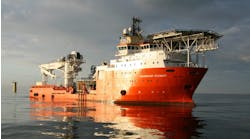Review of case laws provides insight into jurisdiction of federal agencies
Robert Nichols & Heather Palmer
Bracewell & Giuliani
Oil and gas exploration and production businesses recognize that the primary regulator of occupational safety for their onshore operations is the U.S. Department of Labor’s Occupational Safety and Health Administration (OSHA). The question of which agency has jurisdiction with regard to occupational safety for offshore operations, however, is a far more complex issue. On the outer continental shelf (OCS), the primary regulators with regard to safety generally, including occupational safety, are the United States Department of Interior’s Bureau of Safety and Environmental Enforcement (BSEE), and the US Coast Guard. At the same time, OSHA still maintains a jurisdictional role with regard to safety of offshore operations.
Extent of preemption
Under the Occupational Safety and Health Act of 1970 (OSH Act), OSHA is the key regulator of occupational safety and health in the private sector. In some states, including, for example, California and Alaska, the agency has delegated its enforcement authority to an approved state plan agency, but in most other key oil and gas producing states, federal OSHA continues to have direct enforcement authority.
However, there is a significant limitation on OSHA jurisdiction. Specifically, under Section 4(b)(1) of the OSH Act, the agency’s jurisdiction over occupational safety is supplanted for “working conditions of employees with respect to which other federal agencies…exercise statutory authority to prescribe or enforce standards or regulations affecting occupational safety or health.”
For many years, there was an unresolved legal dispute over how broadly OSHA jurisdiction was preempted by the regulatory authority of another agency. For instance, some courts suggested that OSHA jurisdiction over various industries was broadly preempted by the jurisdiction of another federal agency. By way of example, maritime businesses long contended that the Coast Guard’s safety regulatory authority broadly preempted OSHA jurisdiction over their industry.
In its 2002 Chao v. Mallard Bay Drilling, Inc., decision, however, the US Supreme Court rejected the notion that Section 4(b)(1) preemption creates industry-wide exemptions from OSHA jurisdiction. Instead, the court held that preemption is determined on a hazard-by-hazard basis. In other words, if another federal agency has promulgated applicable regulations that it enforces with regard to a particular occupational safety hazard, then OSHA jurisdiction is supplanted as to that particular hazard.
Outer continental shelf
First in 1953 with enactment of the Outer Continental Shelf Lands Act (OCSLA), and then more extensively in 1978 amendments to that law, Congress conferred jurisdiction on the US Coast Guard for occupational safety regulation for work performed on the OCS.
The OSH Act itself, however, expressly provides that OSHA has authority over “State Territorial Waters” as well as “Outer Continental Shelf Lands.” “State Territorial Waters” include the area three nautical miles seaward from the general coastline except for the Gulf Coast of Florida, Texas, and Puerto Rico, where the state territorial waters extend for nine nautical miles.
As for the OCS, although it is apparent from the 1978 OCSLA amendments that the Coast Guard had primary jurisdiction, because the OSH Act expressly extends OSHA jurisdiction to the OCS, the actual regulatory role of OSHA on the OCS has remained far from clear.
The two agencies have provided some guidance concerning this question by entering into a series of memoranda of understanding beginning in 1979. The agencies agreed that the Coast Guard would serve as the chief regulator of safety on the OCS but that OSHA would retain jurisdiction to enforce its standards which apply to working conditions on the OCS for which neither the Coast Guard nor any other federal agency had exercised authority.
These jurisdictional issues became even more complex in 1982 when the Minerals Management Service (MMS) was created to regulate offshore oil, gas and other mineral resource activities. Ultimately, the Coast Guard conferred jurisdiction on the MMS to conduct safety inspections of oil and gas platforms on the OCS.
Following the Deepwater Horizon accident in 2010, the Secretary of the Interior divided the MMS into two agencies with one of those agencies, BSEE, tasked with regulating the safety of offshore oil and gas operations. Since that time, with the adoption of SEMS I and II, BSEE has taken on a much more far-reaching regulatory role with regard to safety of offshore oil and gas operations.
OSHA has effectively recognized how pervasively its jurisdiction on the OCS has been preempted by BSEE and Coast Guard regulation. For instance, in a February 2015 interpretation letter, OSHA explained:
The Coast Guard and [BSEE] have issued extensive regulations applicable to occupational safety and health on the OCS. Therefore, pursuant to section 4(b)(1) of the OSH Act, OSHA cannot enforce its requirements to working conditions if the working conditions are already regulated by another federal agency.
While recognizing that accident investigations and most regulatory enforcement on the OCS are to be conducted by the Coast Guard and BSEE, OSHA continues to take the position that it retains the authority to enforce standards concerning occupational hazards on structures or facilities located on the OCS for which neither the Coast Guard nor BSEE maintain rules. Nevertheless, again, with the adoption of the SEMS rules, it would appear that preemption of OSHA jurisdiction for oil and gas operations on the OCS is far-reaching.
State territorial waters
Importantly, in “State Territorial Waters,” which lie between the shoreline and the OCS, OSHA maintains much more extensive jurisdiction. For instance, neither BSEE nor the Coast Guard exercise jurisdiction over oil and gas rigs in state territorial waters and, therefore, OSHA continues to possess jurisdiction.
Similarly, with regard to vessels that are designated as “uninspected vessels” for purposes of Coast Guard regulation, OSHA retains jurisdiction except as to those very limited conditions for which the Coast Guard regulates uninspected vessels.
Also, even on Coast Guard “inspected vessels,” OSHA retains some jurisdiction in state territorial waters with regard to individuals who are not regarded as “seamen” for Jones Act purposes.
Conclusion
Effectively, OSHA’s regulatory involvement with activities on the OCS is very limited. While OSHA, in theory, retains the right to enforce its regulations on the OCS for working conditions that have not been regulated by BSEE or the Coast Guard, OSHA recognizes it has little authority on the OCS given Section 4(b)(1) preemption principles.
Practically speaking, however, even on the OCS, employers should make every effort to comply with OSHA-specific standards where those standards are not inconsistent with an applicable BSEE or Coast Guard rule. After all, BSEE and Coast Guard regulators may look to OSHA standards for guidance and also retain the authority to involve OSHA with respect to safety concerns not regulated by either agency. Additionally, in tort litigation, an OSHA standard may be viewed as indicative of what is reasonable or appropriate conduct.


